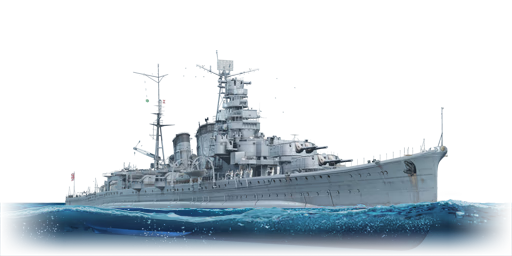The Aoba (青葉, namesake: Mount Aoba) was a Japanese heavy cruiser commissioned in September 1927, designed as a modified version of the Furutaka class with improved twin 20.3 cm gun turrets and aircraft catapults. Despite being overweight upon completion, she joined the Sixth Squadron alongside her sister ship Kinugasa and the two Furutaka-class vessels, participating in patrols along the China coast during the 1920s and 1930s. During the Second World War, Aoba took part in the invasions of Guam and Wake Island in December 1941, escorted the light carrier Shōhō during the Battle of the Coral Sea in May 1942, and was involved in the Battle of Savo Island in August 1942, where she contributed to the sinking of several Allied cruisers. In October 1942, at the Battle of Cape Esperance, Aoba was severely damaged, losing her second and third turrets and suffering heavy casualties, including the death of Rear Admiral Goto. After repairs, she returned to action but was damaged again by an air raid in April 1943, leading to her being disguised as an island, nicknamed "The Aoba Island", to avoid detection while undergoing emergency repairs. She continued to serve in escort and patrol duties despite engine damage limiting her speed but suffered further torpedo and air attack damages in late 1944, eventually being deemed irreparable and reclassified as a reserve ship. In 1945, Aoba was converted into a floating anti-aircraft battery but was sunk during air raids on Kure in July, settling at the bottom of the harbour with her stern broken off. Her wreck was scrapped between 1946 and 1947.
Introduced in Update "Direct Hit", Aoba shares her survivability, mobility, and main armament with Furutaka, with the key difference being her vastly improved anti-aircraft capability, which also includes a simple air-search radar but lacks the hydroplane. In all other ways, the vessel performs exactly the same as its direct predecessor, possessing excellent main guns, outstanding torpedoes, and a decent capability for dealing with coastal vessels. One of the class's biggest advantages are its deeply submerged magazines, making direct explosions of the ammo racks much less likely than among the foreign equivalents. However, her poorly protected turrets are easy to knock out, even by enemy destroyers or frigates.














